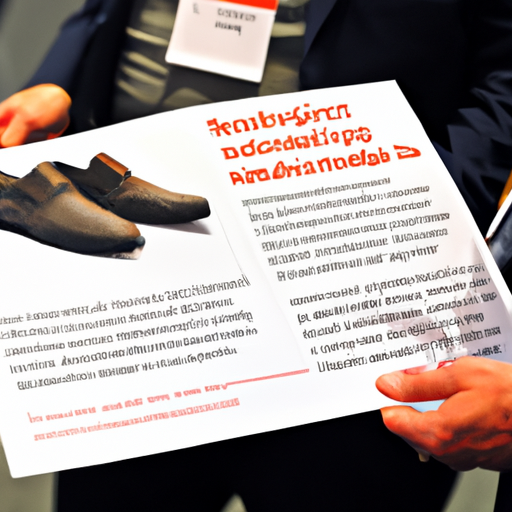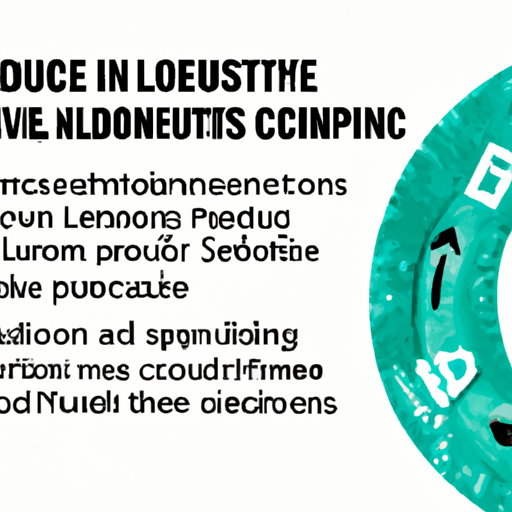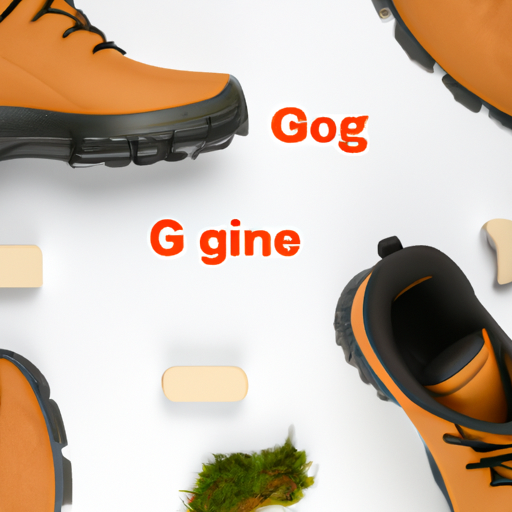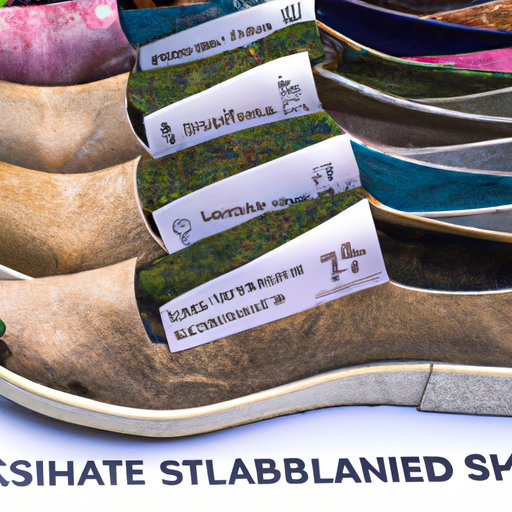In a world where fashion trends come and go with the blink of an eye, one thing remains constant: our planet’s need for sustainability. As we collectively shift towards a more eco-conscious mindset, it is essential to recognize the strides made by sustainable shoe brands. These pioneers of greener fashion are not only redefining the footwear industry but also paving the way to a more conscientious tomorrow. With innovation, style, and an unwavering commitment to the environment, sustainable shoe brands are leading us towards a greener future, one step at a time.
1. Championing Eco-Friendly Materials: Exploring Sustainable Shoe Brands’ Innovative Choices
When it comes to the world of footwear, sustainability is taking center stage. Sustainable shoe brands are paving the way for a greener future by championing eco-friendly materials that not only reduce environmental impact but also cater to the needs and desires of conscious consumers. These brands are pushing the boundaries of innovation, proving that style and sustainability can coexist harmoniously.
One of the key elements driving this movement is the use of innovative materials derived from nature. In the pursuit of eco-friendliness, sustainable shoe brands are adopting materials such as:
- Recycled Plastic: By transforming plastic waste into trendy sneakers or sandals, these brands are not only diverting plastic from landfills, but also reducing the reliance on virgin plastic production.
- Plant-Based Fabrics: From pineapple leaves to seaweed, sustainable shoe brands are extracting fibers from nature to create breathable and durable fabrics that serve as an alternative to traditional synthetic materials.
- Organic Cotton: Switching to organic cotton reduces the use of harmful chemicals, water consumption, and pollution associated with conventional cotton farming, making it an ideal choice for brands striving to be environmentally responsible.
- Cork: Known for its renewable and biodegradable characteristics, cork is becoming an increasingly popular material used in shoe manufacturing due to its lightweight properties and shock absorption capabilities.
Furthermore, sustainable shoe brands are exploring innovative production methods that prioritize reducing waste and energy consumption. Some brands opt for:
- 3D Printing: By utilizing this cutting-edge technology, shoes can be crafted with precision, eliminating the need for excess material and reducing production waste.
- Waterless Dyeing: Unlike traditional dyeing processes that consume large amounts of water and produce harmful wastewater, waterless dyeing techniques use minimal water or eliminate it altogether, significantly reducing the environmental impact.
- Upcycling: Sustainable brands embrace the concept of upcycling by transforming discarded materials or unwearable shoes into new products, adding value to what would otherwise be considered waste.
Embracing these innovative choices, sustainable shoe brands are reshaping the fashion industry by proving that eco-consciousness can coexist with style and comfort. By championing eco-friendly materials and exploring innovative production methods, they are encouraging consumers to make more sustainable choices without compromising on fashion-forward footwear.

2. Ethical Manufacturing Practices: How Sustainable Shoe Brands are Reshaping the Industry
In a world where fast fashion has become the norm, sustainable shoe brands are stepping up to reshape the industry with their commitment to ethical manufacturing practices. These brands are revolutionizing the way shoes are produced, showing that fashion and social responsibility can go hand in hand.
From sourcing eco-friendly materials to ensuring fair working conditions, sustainable shoe brands are setting a new standard for the entire footwear sector. Here’s how they are making a difference:
- 1. Mindful Material Choices: Sustainable shoe brands prioritize the use of organic or recycled materials, such as organic cotton, hemp, or recycled plastics, reducing the environmental impact of footwear production.
- 2. Responsible Manufacturing: These brands partner with factories that adhere to fair labor practices, providing safe working conditions, fair wages, and reasonable working hours to employees.
- 3. Reduced Carbon Footprint: Through eco-friendly production techniques and transportation methods, sustainable shoe brands aim to minimize their carbon footprint, from manufacturing to distribution.
- 4. Transparency and Traceability: Many sustainable shoe brands are committed to providing consumers with full transparency about their supply chains, allowing customers to trace the journey of their shoes and ensure they are ethically produced.
- 5. Waste Reduction: These brands actively reduce waste by implementing practices such as recycling production leftovers, using water-based adhesives, and designing shoes for longevity.
By embodying these sustainable practices at every step, ethical shoe brands are reshaping the industry and encouraging consumers to make conscious choices while enjoying stylish and durable footwear.

3. Extended Product Lifecycles: Promoting Circular Economy through Sustainable Shoe Brands
In a world where fast fashion and consumerism prevail, the concept of extended product lifecycles is a revolutionary idea that challenges the status quo. The rise of sustainable shoe brands has brought forth a new era of conscious consumerism, where the focus is not only on creating trendy and fashionable footwear but also on minimizing environmental impact.
One of the key strategies adopted by sustainable shoe brands is the use of durable and high-quality materials. Instead of using cheap and synthetic materials that quickly wear out, these brands opt for eco-friendly alternatives such as organic cotton, recycled polyester, and plant-based leather substitutes. These materials not only have a lower carbon footprint but also ensure that the shoes can withstand the test of time, promoting longevity and reducing waste.
- Repair and refurbishment: Sustainable shoe brands actively encourage their customers to repair or refurbish their shoes instead of discarding them. They offer repair services or provide easy-to-follow guides on DIY repairs. By extending the life of their products, these brands contribute to reducing landfill waste and saving valuable resources.
- Take-back and recycling programs: Some sustainable shoe brands take responsibility for their products even after they have served their purpose. They have implemented take-back programs, where customers can return their worn-out shoes for recycling or proper disposal. This closed-loop approach ensures that every pair of shoes has the chance to be repurposed or recycled.
- Collaborations with second-hand marketplaces: To further promote circular economy principles, sustainable shoe brands collaborate with second-hand marketplaces, allowing customers to resell or buy pre-loved shoes. This not only gives the shoes a second life but also reduces the demand for new products, thereby minimizing the environmental footprint.
In conclusion, sustainable shoe brands are leading the way in promoting extended product lifecycles and embracing circular economy principles. Through the use of durable materials, repair initiatives, take-back programs, and collaborations with second-hand marketplaces, these brands are changing the narrative around footwear consumption and inspiring consumers to make more conscious choices. By supporting sustainable shoe brands, we can all contribute to a more sustainable and circular future.

4. Making Informed Consumer Choices: Key Considerations for Supporting Green Footwear
Key Considerations for Supporting Green Footwear
When it comes to making eco-conscious choices in our daily lives, our footwear choices should not be overlooked. Supporting green footwear not only benefits the environment but also promotes sustainability and helps create a better future. Here are some key considerations to keep in mind when making informed consumer choices for green footwear:
- Materials: Opt for footwear made from sustainable and renewable materials such as organic cotton, hemp, cork, or recycled materials. These alternatives reduce the reliance on non-renewable resources and minimize environmental impact.
- Production: Look for brands that prioritize ethical manufacturing processes, including fair wages, safe and healthy working conditions, and reduced carbon emissions. Supporting companies with responsible production practices contributes to a more sustainable industry overall.
- Transparency: Choose brands that are transparent about their supply chain and production methods. Companies that provide information about their sourcing, manufacturing, and environmental initiatives show a commitment to honesty and accountability.
- Quality: Investing in high-quality, well-crafted footwear ensures their longevity, reducing the need for frequent replacement. Supporting brands that prioritize durability and repairability not only saves money in the long run but also minimizes waste.
- End-of-life options: Consider the end-of-life options for your footwear. Look for brands that offer recycling programs or take-back initiatives, enabling you to appropriately dispose of worn-out shoes and contribute to circular economy practices.
By actively considering these aspects, we can make a positive impact on the environment and support businesses that strive for sustainability. Together, let’s make informed choices and embrace green footwear as a step towards a greener future.

5. Taking Steps Towards a Sustainable Future: Recommendations for Embracing Eco-Friendly Shoe Brands
Taking Steps Towards a Sustainable Future
In a world that is becoming increasingly conscious of its environmental impact, it is crucial to make conscious choices when it comes to the products we buy. Shoes, being an essential part of our daily lives, have a significant impact on the environment due to the harmful practices of many fashion brands. Embracing eco-friendly shoe brands is a step towards a more sustainable future, and here are some recommendations to help you make a positive change.
1. Prioritize Sustainable Materials
When selecting eco-friendly shoe brands, look for those that prioritize the use of sustainable materials. Opt for shoes made from organic cotton, hemp, recycled plastic, or natural rubber. These materials have a lower environmental impact and are often free from harmful chemicals.
2. Support Ethical Manufacturing Processes
Choose shoe brands that promote fair labor practices and ethical manufacturing processes. Look for certifications like Fair Trade or Ethical Trading Initiative (ETI) to ensure that the shoes you purchase are made under safe and fair working conditions. By supporting these brands, you contribute to a better livelihood for workers while reducing the negative social and environmental impacts of the fashion industry.
3. Seek Out Sustainable Packaging
The journey towards sustainability doesn’t end with the shoes themselves, but also extends to their packaging. Opt for shoe brands that use eco-friendly packaging materials, such as recycled or recyclable materials. Additionally, some brands even package their products in biodegradable or compostable packaging, reducing waste and minimizing their carbon footprint further.
4. Look for Transparent Supply Chains
Choose shoe brands that prioritize transparency in their supply chains. Brands that openly disclose information about their suppliers, manufacturing processes, and environmental initiatives help consumers make informed decisions. By supporting transparent companies, you can promote accountability and encourage the industry to adopt sustainable practices.
5. Consider Longevity and Repairability
Investing in high-quality, durable shoes will not only reduce the need for frequent replacements but also minimize waste. Look for brands that emphasize longevity and offer repair services to extend the lifespan of their products. By choosing shoes that are designed to last, you contribute to a more sustainable future by reducing your overall environmental footprint.
To Conclude
In conclusion, as we embark on a journey towards a greener fashion future, sustainable shoe brands have undoubtedly taken a pivotal step in the right direction. These innovative and forward-thinking companies have impressively combined style, comfort, and environmental consciousness, proving that we can tread lightly without compromising on our desire for fashionable footwear.
With their commitment to using eco-friendly materials, embracing renewable energy sources, and implementing ethical manufacturing practices, these sustainable shoe brands have exemplified how sustainable fashion can be more than just a passing trend. It is a valuable movement that challenges the conventional norms of the industry and paves the way for a brighter, greener future.
Not only are these brands making strides in environmental stewardship, but they are also fostering social progress. By promoting fair labor conditions, supporting local artisans, and prioritizing transparency throughout their supply chains, they are championing a culture of inclusivity and equity.
Furthermore, these trailblazing brands are changing the narrative surrounding sustainable fashion. No longer synonymous with dull and uninspired designs, their creations are a testament to the limitless possibilities that can arise when passion and environmental consciousness seamlessly merge.
As consumers and fashion enthusiasts, we are armed with the power to shape the future we want to see. By supporting sustainable shoe brands, we not only contribute to the preservation of our planet but also encourage others in the industry to follow suit. Together, we can redefine fashion’s footprint, leaving behind a legacy of style and sustainability for generations to come.
So, let us walk hand in hand with these sustainable shoe brands towards a greener future. With every step we take in their eco-conscious creations, we turn fashion into a force for positive change. Let our choices echo through the corridors of the industry, inspiring and encouraging others to join the movement.
In this symbiotic relationship between fashion and sustainability, we hold the key to transforming the world of footwear. And as we slip into a pair of ethically crafted, environmentally friendly shoes, we not only walk with a lighter impact but also stride confidently towards a more sustainable and responsible fashion future.
